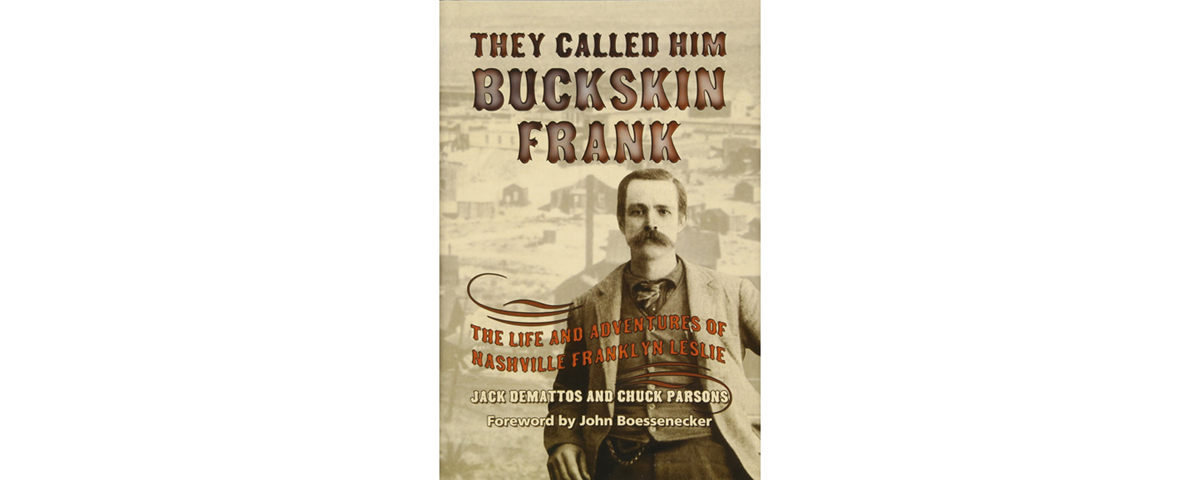They Called Him Buckskin Frank: The Life and Adventures of Nashville Franklyn Leslie, by Jack DeMattos and Chuck Parsons, University of North Texas Press, Denton, 2018 $29.95
When it comes to Westerners who made their mark in Tombstone, Arizona Territory, Buckskin Frank Leslie takes a back seat (at least as far as name recognition) to the likes of Wyatt Earp, Doc Holliday, John Ringo, Ike Clanton and Luke Short. But as the man who in 1882 killed Gunfight at the O.K. Corral survivor Billy Claiborne outside the Oriental Saloon in that infamous town, Leslie has hardly been forgotten. He was the subject of four earlier biographical efforts—by Douglas Martin in 1962, Colin Rickards in 1964, Don Chaput in 1999 and Ben Traywick in 2013. This latest effort by two highly regarded researchers of Old West outlaws-and-lawmen history (they teamed up in 2015 to write The Notorious Luke Short: Sporting Man of the Wild West) packs enough new info about Leslie’s life and death to be considered his definitive biography.
Even so, the authors admit plenty of gaps remain in Buckskin Frank’s story. He was apparently born in San Antonio on March 18, 1842, but of his life from then until his July 1869 arrival by steamship in San Francisco nothing is certain. Many claims—that he was a college graduate, served as Wild Bill Hickok’s deputy and scouted for Lt. Col. George Custer, for example—could not be confirmed or denied. His whereabouts in the 1870s remain largely unknown. In the 1880s, though, he spent time in Tombstone, other parts of Arizona Territory and Mexico and was active as a saloon owner and bartender, rancher, miner and scout (during the Apache campaigns) among other escapades. “During that decade,” the authors write, “Leslie played on a much larger stage, for a much longer time, than Wyatt Earp had. Leslie’s Arizona years included nearly every aspect of mining and ranch life that Earp was not part of.…There was a time, during the 1880s, when Earp and Leslie were equals as far as notoriety was concerned.” Like Earp, Leslie was involved with a number of women (legally marrying three of them); unlike Earp, Leslie the lady-killer actually did kill one of his ladies—Mollie Edwards, on July 10, 1889.
Sent to Yuma Territorial Prison, he showed exemplary conduct and received a governor’s pardon in 1896. Leslie spent most of his later years in and around San Francisco. The end came in October 1927, apparently at the hands of a murderer, though the authors note, “We don’t know the motive or the identity of the person (or persons) who may have killed him.” DeMattos and Parsons suggest future historians might follow up and close the “many gaps that still remain in the chronology of Leslie life.” Some gaps never get closed, of course. But thanks to these co-authors, we know more than ever before about colorful Buckskin Frank.
—Editor





